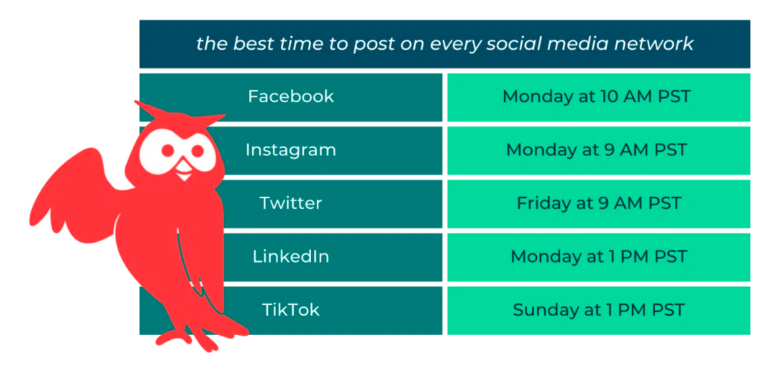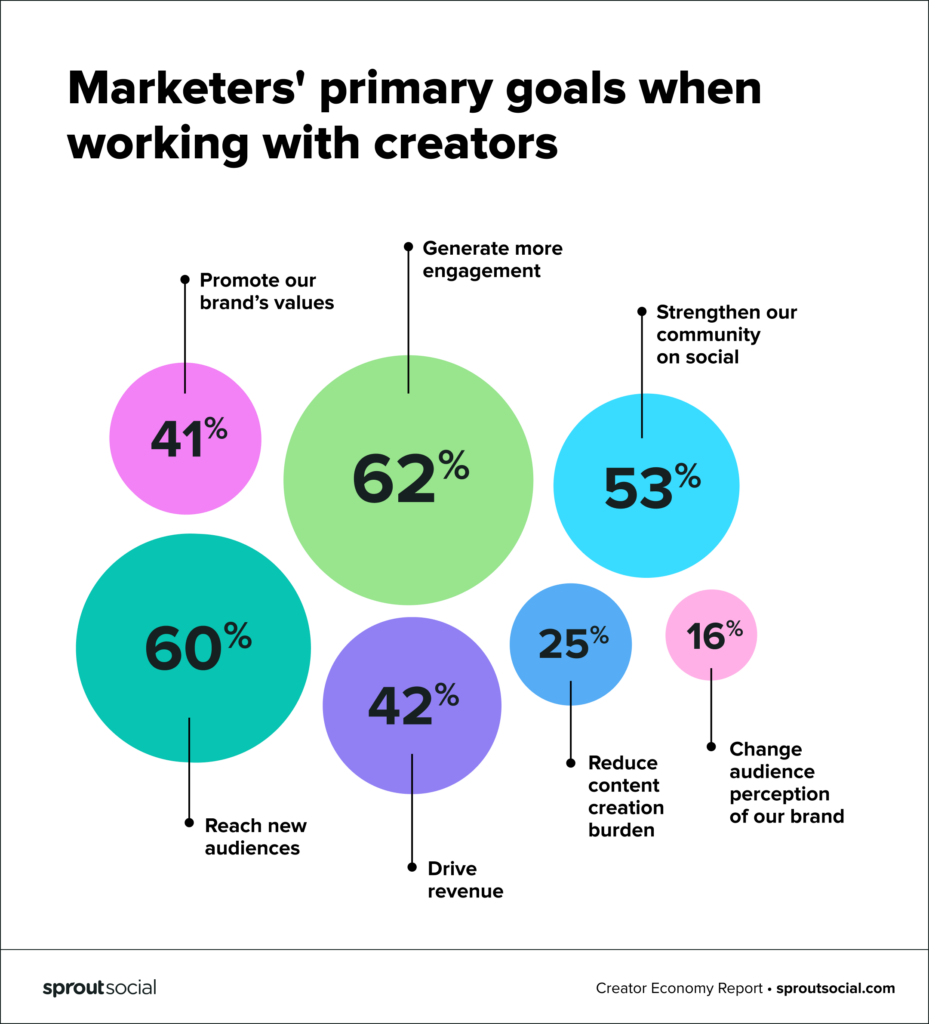Social media has evolved far beyond a brand awareness tool. It’s now a core driver of demand, customer engagement, and even revenue in B2B SaaS. But many marketing leaders still struggle to make the connection between social efforts and real business impact. The common pitfalls? Treating social as an afterthought, focusing too much on vanity metrics, or spreading efforts too thin across too many platforms.
And yet, the opportunity is massive. Studies reveal that as of August 2024, 85% of B2B content marketers ranked LinkedIn as the top platform for delivering value, far outpacing Facebook (28%) and YouTube (22%). The key is having a social media marketing strategy that’s built around business objectives, whether that’s generating leads, nurturing potential customers, or strengthening brand authority.
In this guide, I’ll help you craft an approach that will align your social media strategy to your business goals and give you a roadmap to turn posts into pipeline and conversations into conversions.
Understanding the Basics of Social Media Marketing
Put simply, social media marketing is the use of social media platforms like Instagram, Facebook, X, TikTok and LinkedIn—and the creation of social content—to reach your target audience and promote your brand.
Key Components of a Robust Social Media Strategy
If you want to use social media channels in your content strategy, you will need to:
- Create quality content that’s relevant to your audience members
- Use social media scheduling tools to post consistently and identify gaps in your existing social media content
- Curate content created by other people (user-generated content)
- Interact with users via comments, direct messages, and other channels
- Measure your engagement rate and track other key metrics in a social media report
- Potentially partner with online influencers to promote your company
- Track all social media management costs for accurate ROI calculations
The good news is that you don’t have to do everything alone. If your company is too small to have a dedicated social media team, you can easily hire a freelance social media manager to create content and connect with your ideal customers.
Choosing the Right Social Media Platforms for Your Brand
Not all social platforms are created equal—especially in B2B SaaS. The key to an effective social media marketing plan isn’t being everywhere, but being where your buyers actually engage.
In a 2024 survey of marketers worldwide, 83% cited increased exposure as the biggest benefit of social media marketing, followed by increased traffic (73%) and lead generation (65%). With so much potential, choosing the right platforms is critical to maximizing your reach and driving real business impact.
So where should you focus? LinkedIn is the undisputed leader for B2B (especially when it comes to social selling), but platforms like X, Reddit, and even Slack communities offer high-value engagement if you know how to use them. Success comes down to understanding audience demographics and tailoring your approach: LinkedIn for thought leadership, Reddit for AMAs and niche discussions, and YouTube as an SEO powerhouse.
Instead of spreading your resources thin, I’ll walk you through how to test and scale your presence, ensuring that every effort in social media advertising and content creation delivers measurable impact.
LinkedIn: B2B Marketing and Thought Leadership
LinkedIn today is the go-to platform for B2B decision-makers looking for insights, trends, and solutions. In fact, thought leadership has the power to challenge the status quo, prompting buyers to reconsider their current approach and explore new alternatives.
A strong presence on LinkedIn can do more than build brand awareness; it can drive action. 75% of B2B decision makers say a compelling piece of thought leadership has led them to research a product or service they weren’t previously considering, while 54% have explored a company’s offerings simply because of its consistent, high-quality thought leadership content.
For SaaS brands, where long sales cycles are the norm, social media plays a crucial role in keeping potential customers engaged over time. Decision-makers may not be ready to buy today, but regularly seeing valuable insights from your brand keeps you on their radar. By sharing original research, industry perspectives, and expert-driven insights, you can nurture trust, increase website traffic, and improve click-through rates—all while ensuring your company is top of mind when buyers are finally ready to make a decision.
Reddit: A Goldmine, but Play by the Rules
Reddit is one of the most underrated channels for SaaS marketers, offering direct access to highly engaged, niche communities where potential customers actively discuss industry challenges, tools, and solutions. B2B SaaS brands like HubSpot and Salesforce already use Reddit for community engagement.
Unlike traditional social platforms, Reddit fosters deep, unfiltered conversations, making it an ideal space for organic brand awareness, thought leadership, and customer research. By participating in relevant subreddits like r/SaaS, r/marketing, or r/technology, marketers can answer questions, share insights, and position their brand as a trusted resource—without the noise of traditional social media advertising.
BUT, Reddit demands authenticity. Users are highly skeptical of in-your-face marketing, and each subreddit has its own rules and culture. Missteps, like excessive self-promotion or ignoring community guidelines, can lead to downvotes, negative backlash, or even bans.
To succeed, you should focus on genuine engagement, providing value through comments, AMAs (Ask Me Anything sessions), and helpful content rather than pushing a sales agenda. When done right, Reddit can drive high-intent website traffic, improve click-through rates, support lead generation, and engage prospects throughout the buyer’s journey.
YouTube: The Rise of Video in B2B Marketing
YouTube isn’t just for B2C brands anymore. It's a powerhouse for B2B SaaS marketing too, especially as video content continues to dominate content consumption. With over 2.5 billion monthly active users and accounting for 37% of all mobile traffic, YouTube gives you unparalleled reach. More importantly, video is turning out to be a game-changer in B2B marketing: 99% of video marketers say it has helped increase user understanding of their product or service, while 96% report improved brand awareness, up from 90% in 2024.
For SaaS brands, YouTube is an ideal platform for educational and trust-building content. The most effective video formats include customer testimonials (39%), explainer videos (38%), and product demos (32%)—all of which help potential customers evaluate solutions at their own pace.
Tutorials and how-to videos can further strengthen a brand’s authority by providing actionable insights, while also reducing support queries, something 62% of video marketers have seen firsthand. A well-executed YouTube strategy will drive brand awareness, nurture prospects, enhance user engagement, and improve customer retention.
Facebook: Reaching a Global Audience
As of 2023, Facebook had 3.03 billion monthly active users worldwide. That’s an enormous number equal to nearly 40% of the planet’s population.
Sure, many of those users are more interested in connecting with their close friends and family members or sharing memes than learning about your company, but that doesn’t mean Facebook isn’t a valuable marketing tool. In fact, because of its size and therefore its dataset, it’s arguably one of the best.
Many of those three billion users are people who need your help solving their problems. If your product is designed for women between the ages of 21 and 23 who have purple hair, green eyes, and an interest in knitting—a small audience, to be sure—it’s still likely that many of them use Facebook regularly. Not only that, but Facebook has the dataset and built-in tools to help you reach them.
Instagram: Leveraging Visual Storytelling
According to Oberlo, A recent survey on Instagram users' statistics shows that the number of Instagram users is expected to hit 1.4 billion worldwide in 2025. While that's not quite as many as Facebook, it's certainly still a lot.
Although you can use Instagram to promote almost anything, the platform is especially helpful for showcasing products with a high level of visual appeal. Think clothing, home decor, and accessories over software and office supplies.
As I've learned through reading a lot of Instagram marketing books, the social channel is particularly useful for building brand awareness because it focuses on storytelling. Rather than posting several random photos and videos, you should publish content that that tells a cohesive story about your company.
More Platforms: TikTok, Twitter, Pinterest
TikTok
With over 1.2 billion monthly active users globally, Search Engine Land hails TikTok as one of the fastest-growing social networks on the planet. If your product or service is designed for a younger age group (particularly Millennials or Gen Z’s), sharing short-form video on TikTok should be a top priority.
Twitter (X)
Due to the changes that occurred from Elon Musk taking over as CEO in 2022, Twitter (now 'X') has not seen the same growth as other platforms (in fact it's set to decrease by 5.1% in 2025 to 335.7 million). That said, if your product isn't visually-appealing enough to work well on Instagram or TikTok, Twitter's way of communicating via short-form text (or tweets) may be better for you.
Pinterest is like a virtual bulletin board where people can save information about cooking, home or wedding décor, and other topics of interest. With 482 million users worldwide, consider creating an infographic for your product or writing an informative blog and then pinning the feature image with a title.
How to Identify and Reach Your Target Audience

Now that you know where to spend your time, it’s time to find out how to spend your time to reach your intended target audience. I recommend:
Understanding Demographics and Psychographics
Make sure that each platform’s demographics line up with the demographics and psychographics of the people you’re trying to reach. These include:
| Demographics | Psychographics |
| Gender | Values |
| Age | Goals |
| Income | Attitudes |
| Marital Status | Belief Systems |
For example, as TikTok skews young, it probably isn’t the right place to market your business to senior citizens, but Facebook might be. LinkedIn is highly effective for marketing B2B products, but less for tricked-out tennis shoes.
Creating Buyer Personas
Take time to create a buyer persona—a detailed description of someone who represents your target audience—for each segment of your audience. Get to know their hopes and dreams, greatest triumphs, and most significant challenges. Collect as much information as possible about each segment, then use it to pick a platform and start creating relevant content for that person.
Creating a Content Calendar: Planning for Success
Content calendar, editorial calendar, social media calendar—no matter what you call it, you need a calendar to keep track of your social media content. If you’re looking for something low-tech, try a spreadsheet with columns for topic, post type, and publication date.
Of course, some marketing tools are designed specifically with social media content management in mind. Using one of these tools (which we'll get into a little further below) can help you keep track of your content without having to spend time entering everything in a spreadsheet. For now, check out some great marketing calendar software options we've ranked by best use case.
Once you have a content calendar, start planning out your social media marketing efforts. Aim to do some planning at least once per month. Any less than that and you run the risk of being unprepared; any more than that and you may find it difficult to jump on current social trends or changes in the market.
Types of Content to Consider
As you plan your content, aim to achieve a good balance of content types. Here are some of the most popular types of content available on social media now:
- Reels: Instagram Reels are multi-clip videos that, as of 2025, can last up to 3 minutes. You can even add special effects, creative transitions and music to make your content more memorable.
- Static content: Static content can mean two things: a static post (as in a regular photo or carousel of photos) or content that stays on your profile for long periods of time.
- Videos: Videos are ideal for introducing staff members, giving tours of commercial spaces, or showing off your products. Just remember to put out high-quality videos with excellent sound, and pro tip: include closed captions if someone is speaking.
- Stories: Facebook, Instagram, and TikTok are a few of the platforms to offer Stories, which are photos and videos that disappear from your profile after 24 hours. Posting stories can help you form real-time connections with other users and help them understand what makes your brand so special.
- Text: Although visual content is popular, don’t get so caught up in posting photos and videos that you forget about text-based posts. Text is helpful for SEO, and it can also help you connect with audience members who’d rather read than listen to an audio message or watch a video. Be it a caption or a Twitter post, the power of the written word is not to be underestimated.
Tools for Effective Content Planning
There are a few different types of tools I recommend for content planning, and for using social media as part of your overall marketing strategy:
- Marketing planning software can help you visualize your content strategy across all platforms and align your team on projects and tasks.
- Social media management software can enable scheduling and publishing across various social platforms, plus track engagement and interactions.
- Social media scheduling tools can help you work more efficiently and stay consistent. Upload once and post everywhere on set dates and set times.
- Social media analytics software gathers the data you need to make informed decisions. Track KPIs and Metrics to optimize your strategy.
- Social listening tools scan for specific keywords, phrases, brand names, or topics, providing real-time insights into public sentiment and feedback.
Types Of Social Media Strategies
Whether you're a small business just starting out or an enterprise company with every tool in your arsenal, there are a few different social media strategies you can take. To simplify, the top three are organic, paid, and partnerships:
Organic
Organic social media marketing means that you're not paying to promote your content. You still follow all of the steps involved with creating and posting—and continuing to monitor your published content to engage with your audience—but stop short of allocating a budget to push things further.
While algorithms are designed for pay to play, an organic strategy is not a lost cause. Strengthen your organic strategy by posting consistently, developing themes or regular installments for followers to look forward to, and post at times your audience is online and active for your best shot at reaching them.
According to Hootsuite, the best times to post on social are as follows:

Paid Advertising
As I mentioned above, social algorithms are specifically designed to show your content to more users when you pay for it, and there is naturally a correlation with results. More consumers report finding the perfect product by seeing a targeted ad (49%) over an organic post by a brand (40%), and social accounts are likely to see far faster growth over time when they're paying for more reach.
As with managing a Google Ad campaign, social advertising is a bit of a science. There is a lot of help and resources out there for managing campaigns on Facebook and Instagram, but you'll want to a/b test different approaches to find what really works for you and your audience. Calculating ROI can also help you determine if this use of your marketing budget is really worth it.
Partnerships & Influencer Marketing
Rounding out your social media marketing strategy is the option of partnership or influencer marketing. According to Sprout Social, working with influencers is one of the best inbound marketing strategies being used today, with 67% of marketers significantly increasing their spending on influencers in 2025.
So, how do you give influencer marketing your best shot? Here are a few statistics to consider:
- Instagram offers the highest ROI to influencer marketers, followed by YouTube and Facebook.
- The average ad spend per user in the influencer marketing industry is $5.78
- 81% of marketers say macro-influencers (100,000 to 1M followers) top their list of ideal influencers, shortly followed by micro-influencers (74%).
While most Influencers do charge a rate (making it technically a paid strategy), there are a number of ways you can cash in on ROI. From account takeovers to contests and good old UGC, here are the top goals that marketers are pushing:

Key Performance Indicators and Social Media Metrics
KPIs, or key performance indicators, help you determine where you are, where you want to be, and how close you are to reaching your social media marketing goals. To make your campaigns as successful as possible, make sure you include KPI tracking among your most important social media activities.
Some examples of KPIs you can track include:
- Likes
- Followers growth
- Engagement rate
- Traffic conversions
- Social interactions
- Social sentiment
- Social shares
- Website visits from social
Understanding Follower Count and Growth Rate
- Follower count: This is the easiest metric to track, as it represents the number of followers you have on each platform.
- Growth rate: Your audience growth rate helps you understand whether you’re gaining or losing followers.
Tracking Engagement and Conversion Rates
Of course, the above can be seen as vanity metrics without the right engagement. You want your content to resonate, and result in conversions.
- Social share of voice: This is how many times your brand is mentioned on social media compared to how many times your competitors are mentioned.
- Engagement rate: Your engagement rate represents your comments, shares, saves and likes divided by your total number of followers.
- Conversion rate: This is the percentage of people who performed a desired action compared to the number of clicks the page or post received. If 100 people see a post and 10 of them take a desired action (e.g. signing up for your newsletter), your conversion rate would be 10%.
Advanced Tips for a Refined Social Media Marketing Strategy
Utilizing Hashtags for Greater Reach
Hashtags make it easier for social media users to find content that’s relevant to their interests. To make your social media marketing campaigns as successful as possible, use trending, relevant hashtags in your posts.
Instagram doesn’t have a list of trending hashtags, but it does have an auto-complete feature, making it easier to identify current trends. If you’re using Twitter on a computer, look on the right side of the page to see trending topics.
There are also third-party tools available to help you identify appropriate hashtags for your social media content. When you enter a search term into BuzzSumo, for example, the tool makes recommendations for related tags. Hashtagify is also designed to suggest hashtags based on real-time data.
The Role of User-Generated Content
User-generated content (UGC) is defined by Hootsuite as original, brand-specific content created by customers and published on social media. With 84% of consumers saying they trust peer recommendations above all other sources of advertising, you can see how UGC humanizes your marketing.
To encourage your customers to create their own content, you can:
- Ask for feedback from users and encourage them to show you. What do they love most about your product? What problem did it solve for them?
- Create a unique hashtag customers can use for a shot at being featured on your feed. If you have a high follower count, this is often incentive enough.
- Launch a contest and use UGC as the way to enter.
A/B Testing for Optimized Results
Have two versions of your ad and not sure which one to launch? Or better yet, not sure which one to trust the bulk of your marketing budget to?
Perform A/B testing, where you separate your audience into two random groups. Each group is shown a different variation of the same ad so you can compare the responses to determine which variation works better for you.
Work Your Social Media Magic
And there you have it! A complete social media marketing strategy for 2025. Now that you understand how to use social platforms effectively, it’s time to make social media a major part of your digital marketing strategy.
To make social a long-term growth driver, start by creating a structured playbook that keeps your team aligned on content themes, posting cadences, and engagement strategies. Stay agile by adapting to platform updates and emerging trends, using data to refine your approach and ensure your content remains relevant. Prioritizing engaging content—from thought leadership and AMAs to video tutorials and customer stories—will strengthen your brand’s credibility and impact.
Finally, invest in the right resources and tools to streamline execution. Social media management platforms, analytics dashboards, and automation can help optimize campaigns and track performance. By approaching social media with strategy and intent, you can transform it from a brand awareness channel into a powerful engine for lead generation, customer engagement, and long-term growth.
If you enjoyed this article or learned something new, be sure to subscribe to The CMO newsletter. It's packed with tips and recommended tools to make social media marketing a breeze, and is sent straight to your inbox.


